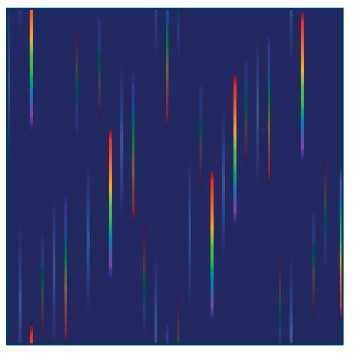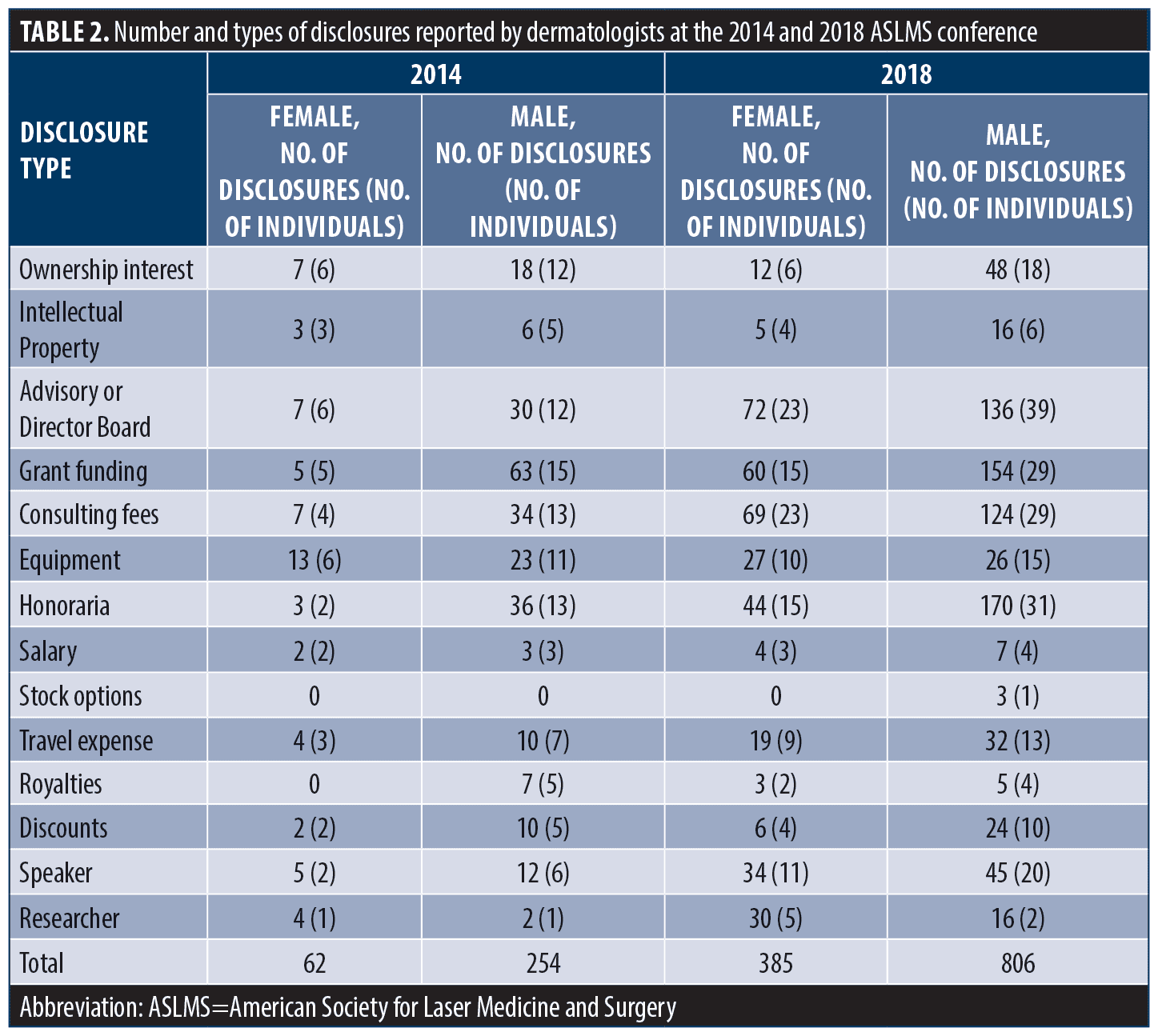 J Clin Aesthet Dermatol. 2023;16(7):43–44.
J Clin Aesthet Dermatol. 2023;16(7):43–44.
by Eric Beltrami, MD; Gabrielle Donofrio, BS; Mitalee Christman, MD; and Hao Feng, MD, MHS
Drs. Beltrami and Feng are with the University of Connecticut’s Department of Dermatology in Farmington, Connecticut. Dr. Donofrio is with the Frank H. Netter MD School of Medicine at Quinnipiac University in North Haven, Connecticut. Dr. Christman is with SkinCare Physicians in Chestnut Hill, Massachusetts.
FUNDING: No funding was provided for this article.
DISCLOSURES: Dr. Christman is a sub-investigator at Revance Therapeutics Inc. Additionally, Dr. Feng is a Consultant at Cytrellis Biosystems Inc. and Soliton Inc. Drs. Donofrio and Beltrami reported no relevant conflicts of interest.
ABSTRACT: Objective. Laser and energy-based cosmetic medical device companies are not required to publicly report their interactions with physicians, resulting in limited data on physician-industry relationships in this domain. To gain a better understanding of these relationships, we characterized dermatology-industry interactions at the American Society for Laser Medicine and Surgery (ASLMS) conference, the largest meeting in the field of medical lasers and energy-based devices.
Methods. Disclosures of all presenters and co-authors were collected for the 2014 and 2018 ASLMS conference programs. Demographic information including gender, fellowship training, and practice setting were obtained and quantified.
Results. There was an increase in disclosures for both male and female dermatologists, 22 percent and 27 percent respectively, between 2014 and 2018, but males still had the greatest overall number of disclosures. The type of interaction varied based on gender with females highest reporting in 2018 being advisory board membership (19%) and males being honoraria (21%).
Limitations. This study was limited by the inability to assess the monetary value of these interactions and assessment of only ASLMS.
Conclusion. There is an increased but differential level of industry interaction among dermatologists between 2014 and 2018, with female dermatologists experiencing the greatest proportional increase.
Keywords. Gender disparities, industry interaction, dermatology, laser surgery
Dermatologist-industry interactions are common, yet data are lacking regarding interactions with laser and energy-based cosmetic device companies, which are not required to publicly report to Open Payments, a national database of payments to physicians by drug and medical companies.1 The American Society for Laser Medicine and Surgery (ASLMS) annual conference, the largest meeting in the field of medical lasers and energy-based devices, does require disclosures of these and other interactions from all presenters and co-authors. To better understand the extent, trends, and differences of device industry engagement among dermatologists, we aimed to characterize dermatologist-industry disclosures at the ASLMS conference.
Methods
Disclosures of all presenting and co-author dermatologists at the 2014 and 2018 ASLMS conferences were collected from conference programs. Demographic data including gender, graduation year, fellowship training, and practice type were collected for each dermatologist using programs and internet search. Trainees and international dermatologists were excluded. Dermatologist characteristics and disclosure types were quantified.
Results
In 2014, 47 (25%) dermatologists at the ASLMS conference reported disclosures compared to 92 (49%) in 2018 (Table 1). Males reported more disclosures (37% in 2014, 59% in 2018) compared to females (13% in 2014, 40% in 2018), despite an almost 300 percent increase for females. Of those who disclosed receiving grant funding in 2014 and 2018, 25 percent and 34 percent were female, respectively. Of those who disclosed receiving honoraria in 2014 and 2018, 13 percent and 33 percent were female, respectively (Table 2). Most dermatologists with disclosures had fellowship training (53% in 2014, 60% in 2018), with Mohs/procedural dermatology (28%) being most common in 2014 and laser/cosmetic surgery (36%) in 2018.


Discussion
Our findings demonstrate increases in industry interactions among dermatologists at the ASLMS conferences between 2014 and 2018, with differences depending on dermatologist characteristics. Males reported four times more industry interactions and more compensation-related disclosures than their female counterparts in 2014 even with a six-fold increase in the proportion of female dermatologist disclosures in 2018.
Therefore, despite a greater proportion of female dermatologists in the field overall, a gender gap of industry interaction exists. Increased industry interactions among younger female dermatologists is promising and may suggest increasing female inclusion in industry interactions and/or focus on entrepreneurship.
A greater proportion of private dermatologists have industry involvement compared to academic dermatologists, possibly due to institution-specific policies on industry interactions or compensation along with administrative and regulatory burden differences, as advising is more common than funding among academic dermatologists. Tenured academic dermatologists reported more industry interactions than non-tenured academics, though increases were observed for all rankings in 2018. Newer dermatologists are underrepresented in disclosures, suggesting more experienced dermatologists may have stronger industry ties or increased recruitment by industry. Disclosures are greater among fellowship trained dermatologists, suggesting specialized expertise is relevant in industry interactions.
This study is limited by inability to assess the monetary value of industry interactions and assessing ASLMS only. Yet, our study reveals overall increased but differential dermatologist industry engagement between 2014 and 2018. With notable increases in female and newer dermatologist disclosures by 2018, these findings suggest greater gender and age diversity in laser and cosmetic industry interactions although opportunity exists for further diversity. More equitable industry engagement may ultimately stimulate greater diversity and collaboration among dermatologists in technologic and pharmacologic innovations.
References
- Feng H, Wu P, and Leger M. (2016). Exploring the Industry-Dermatologist Financial Relationship: Insight From the Open Payment Data. JAMA Dermatology. 152(12), 1307–1313.

